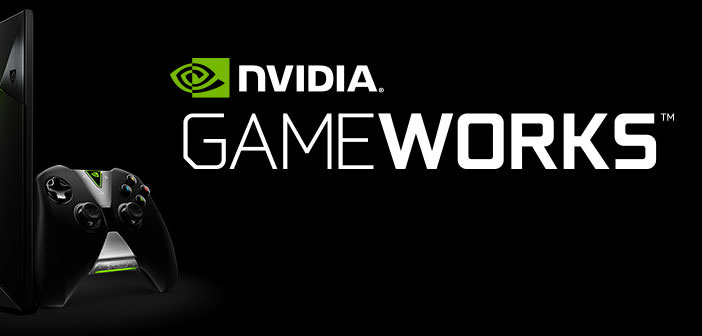At the Game Developers Conference NVIDIA it has provided new details on its GameWorks suite, now enriched with three new rendering techniques.
NVIDIA Volumetric Lighting, NVIDIA Hybrid Frustum Traced Shadows (HFTS) and NVIDIA Voxel Accelerated Ambient Occlusion (VXAO) are the new techniques at the base, respectively, of the rendering of lighting, shadows and ambient occlusion. Part of Gameworks 3.1 suite, presented by NVIDIA at the Game Developers Conference in San Francisco.
Recall that GameWorks is the development tool that NVIDIA shares via GitHub with developers to improve the graphics of the PC version of the games and to introduce new effects in order to increase the visual detail.
The first of the new techniques very similar to the one to which we have so far made reference to the names of God Rays or rays Crepuscolari, debuted with Fallout 4 and takes account of the microparticles in the environment in an attempt to reproduce the light rays faithful as possible. Each of these particles can reflect or refract light, as seen in the images of Fallout 4.

The most Innovative Hybrid Frustum Traced Shadows, a new technique for the management of the shadows which debuts in The Division. With the new algorithm NVIDIA wants to make sure that the marking of shadows is correct as a function of the distance of the object that occludes the passage of light and generates the shadow.
Thanks to HFTS, then, we will have more harsh shadows when you are near the object occluding and softer in the long run. Here’s an example (let slide the mouse over the image to track the differences), while others will publish comparisons made with The Division in the coming days.
 Then VXAO is the new algorithm for real-time playback of faithful ambient occlusion effects. It is superior to previous techniques because it takes into account the shadows produced by any three-dimensional object is present in the environment and not just those produced by objects visible in the frame.
Then VXAO is the new algorithm for real-time playback of faithful ambient occlusion effects. It is superior to previous techniques because it takes into account the shadows produced by any three-dimensional object is present in the environment and not just those produced by objects visible in the frame.
This technique debuted with Rise of the Tomb Raider, as you can see for yourself from the following comparative published by NVIDIA.
There are also new developments regarding the package dedicated to PhysX physics, inserted by a bit of time now at Gameworks. NVIDIA PhysX-GRB is the new engine implementation that deals with the simulation of the dynamics of rigid bodies.
It takes advantage of both the CPU and the GPU to considerably speed up the calculations related to physics.
NVIDIA Flow is rather an algorithm that manages the fluid dynamics inside the video game, and that renders combustible fluids such as smoke and fire. With the new version of the effect it is not guaranteed only within a circumscribed space, but extended to the entire scene.
The Gameworks source codes, as well as the Volumetric Lighting and FaceWorks, are now available on GitHub. Soon NVIDIA will also release those Hairworks, HBAO+ and WaveWorks. Other details can be found at this address.



